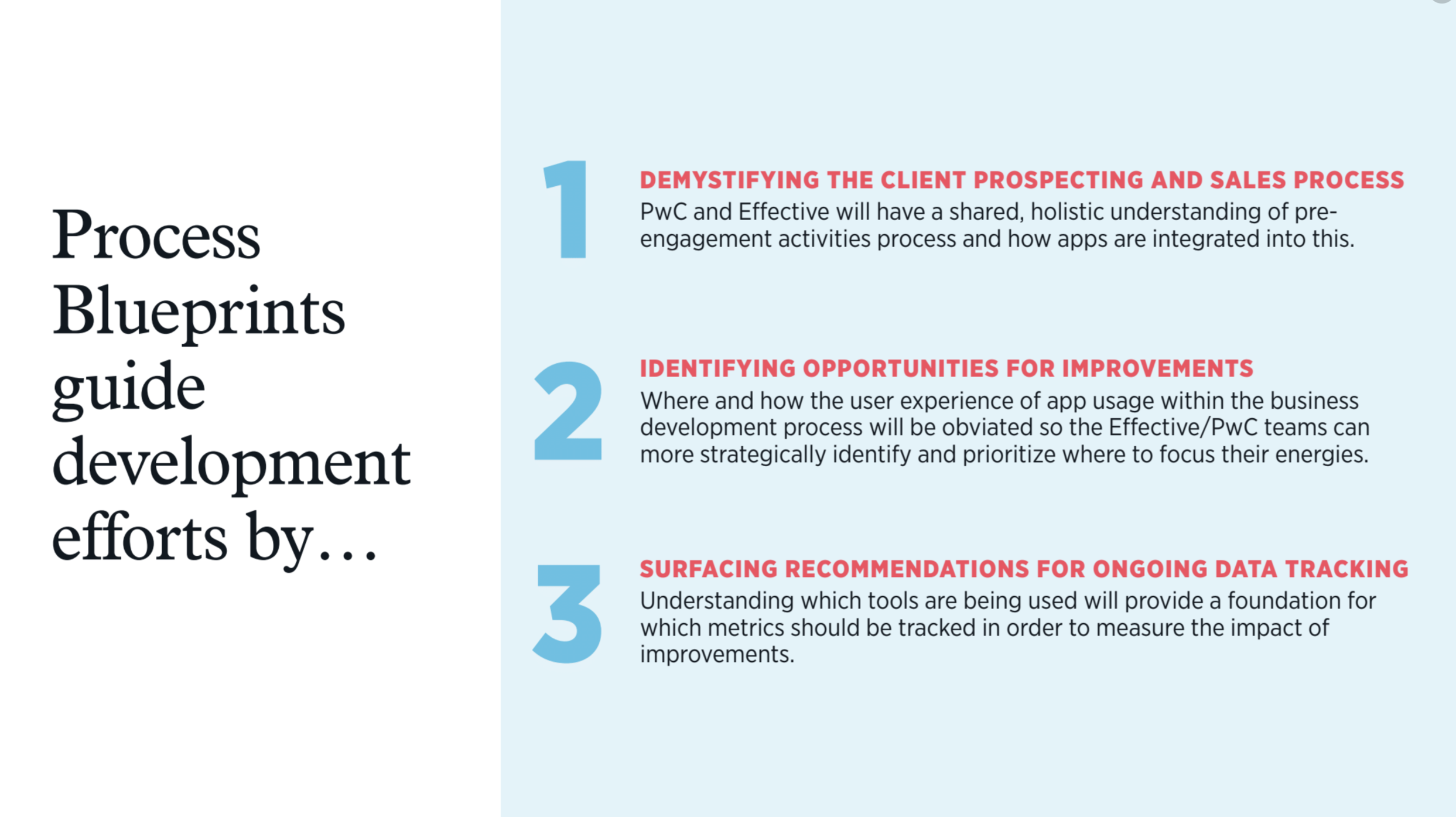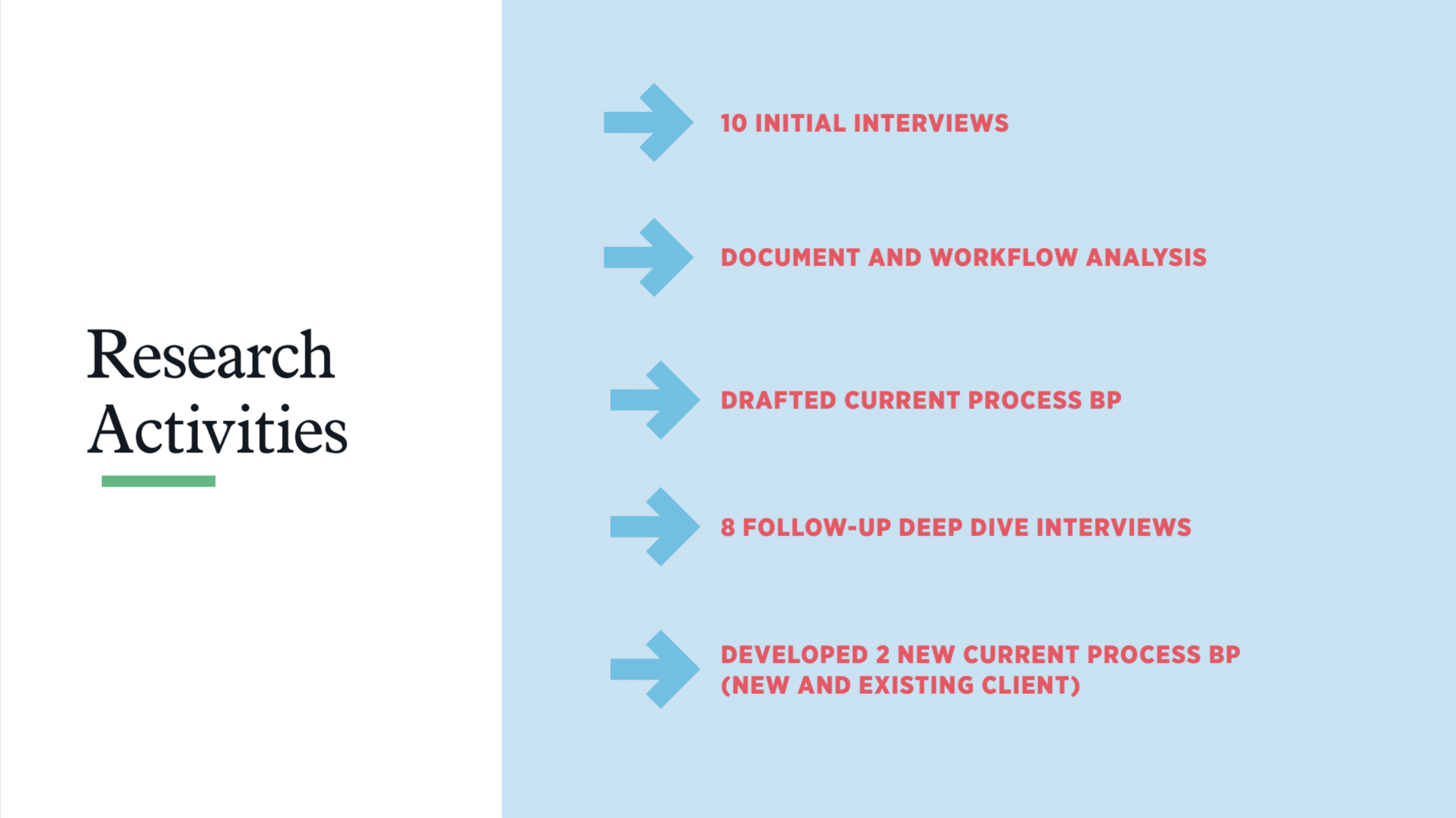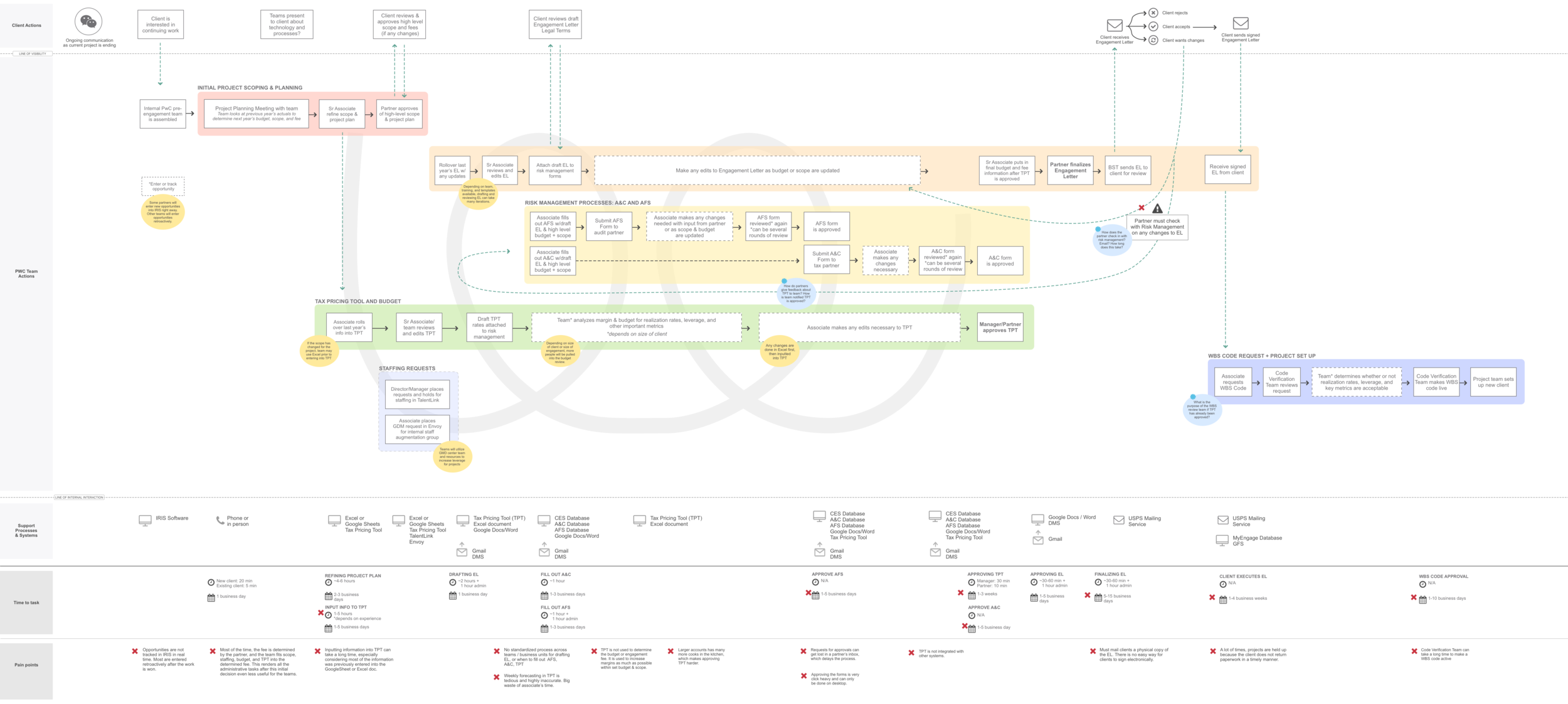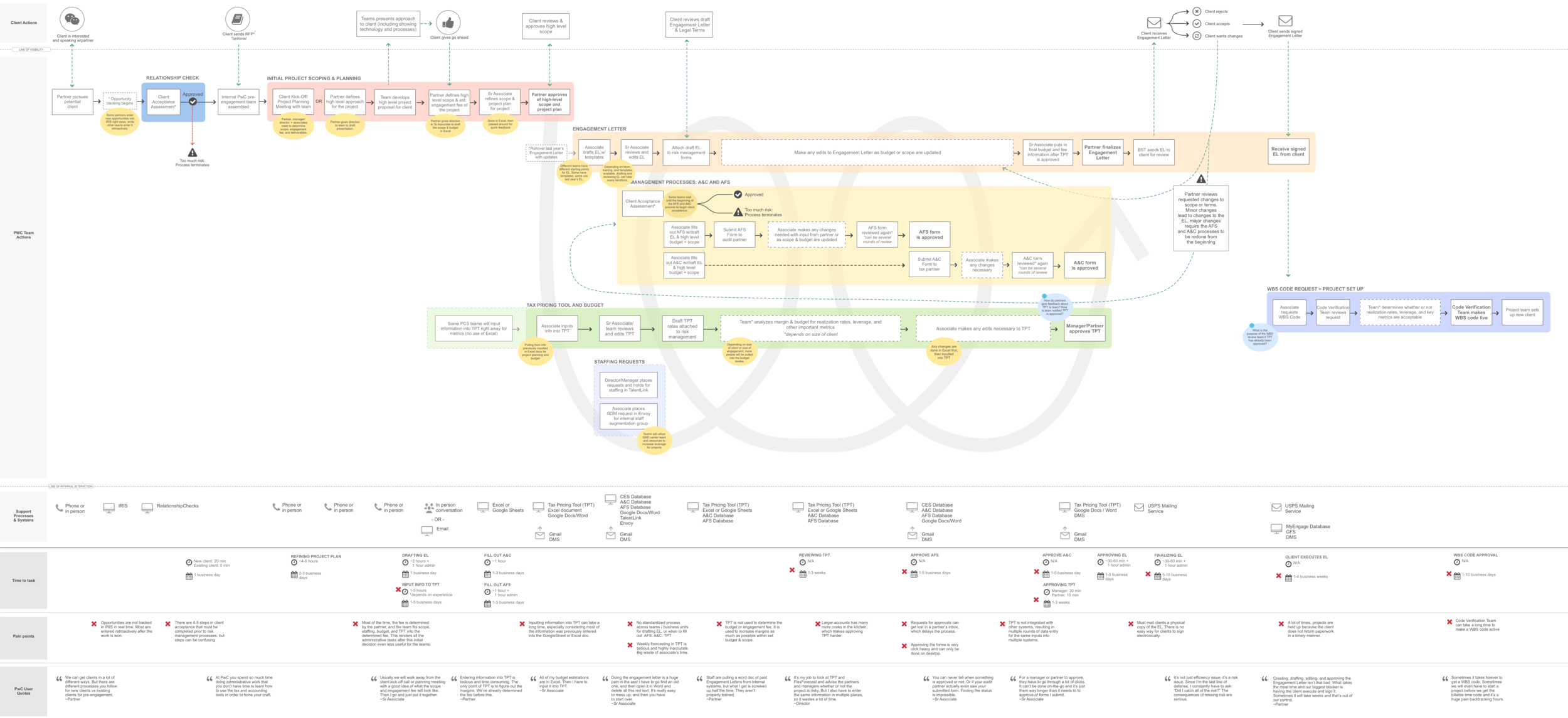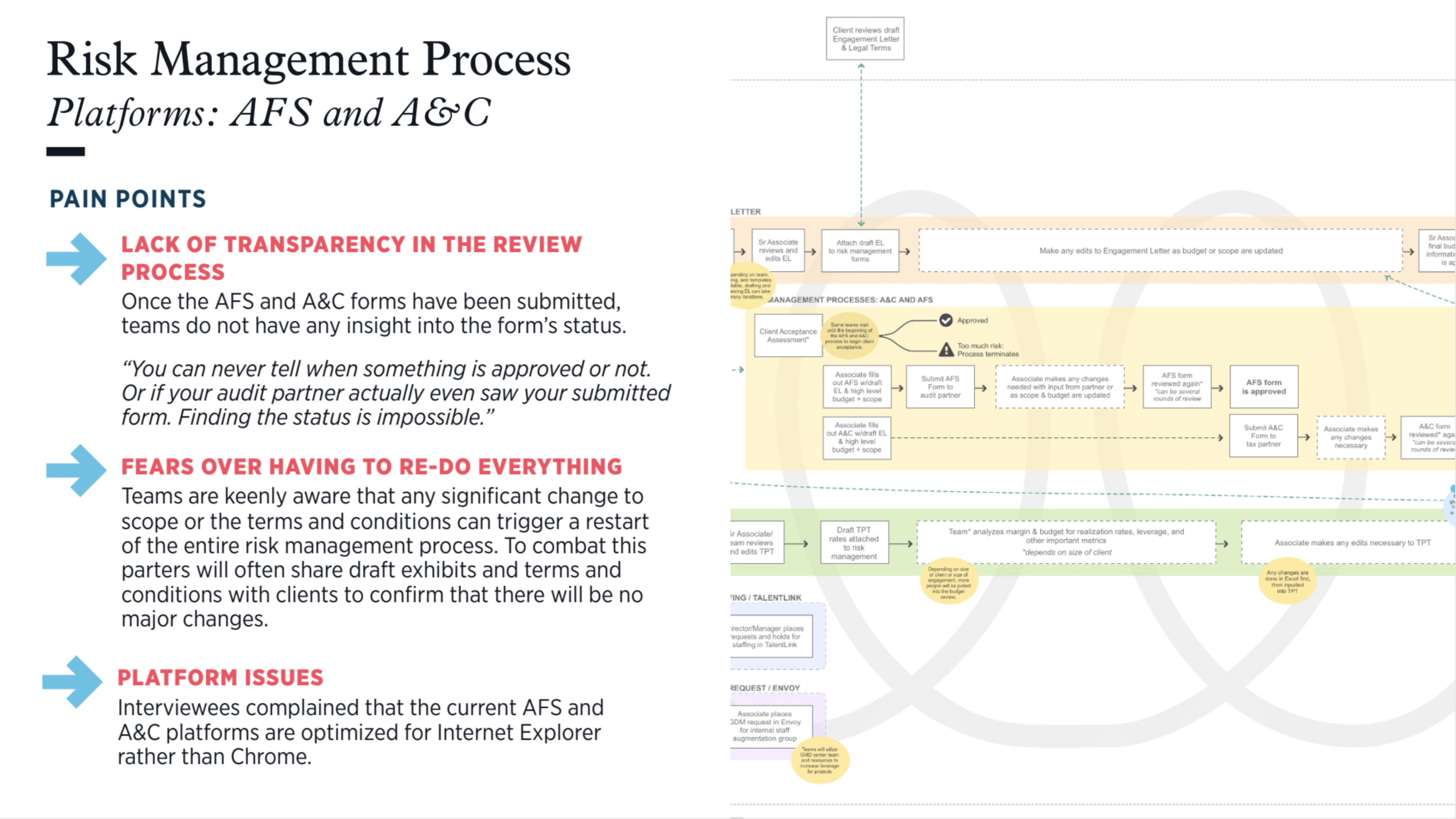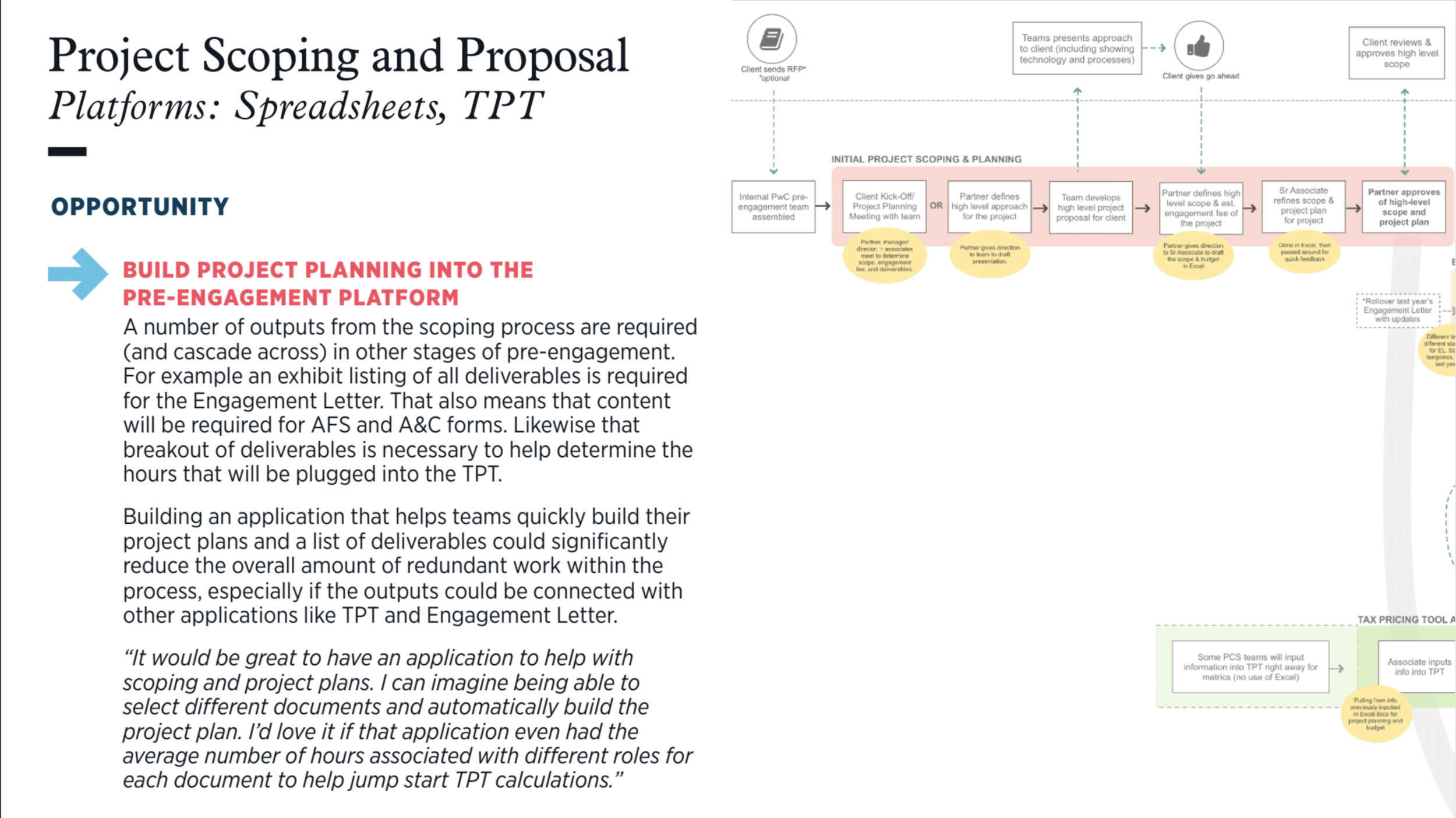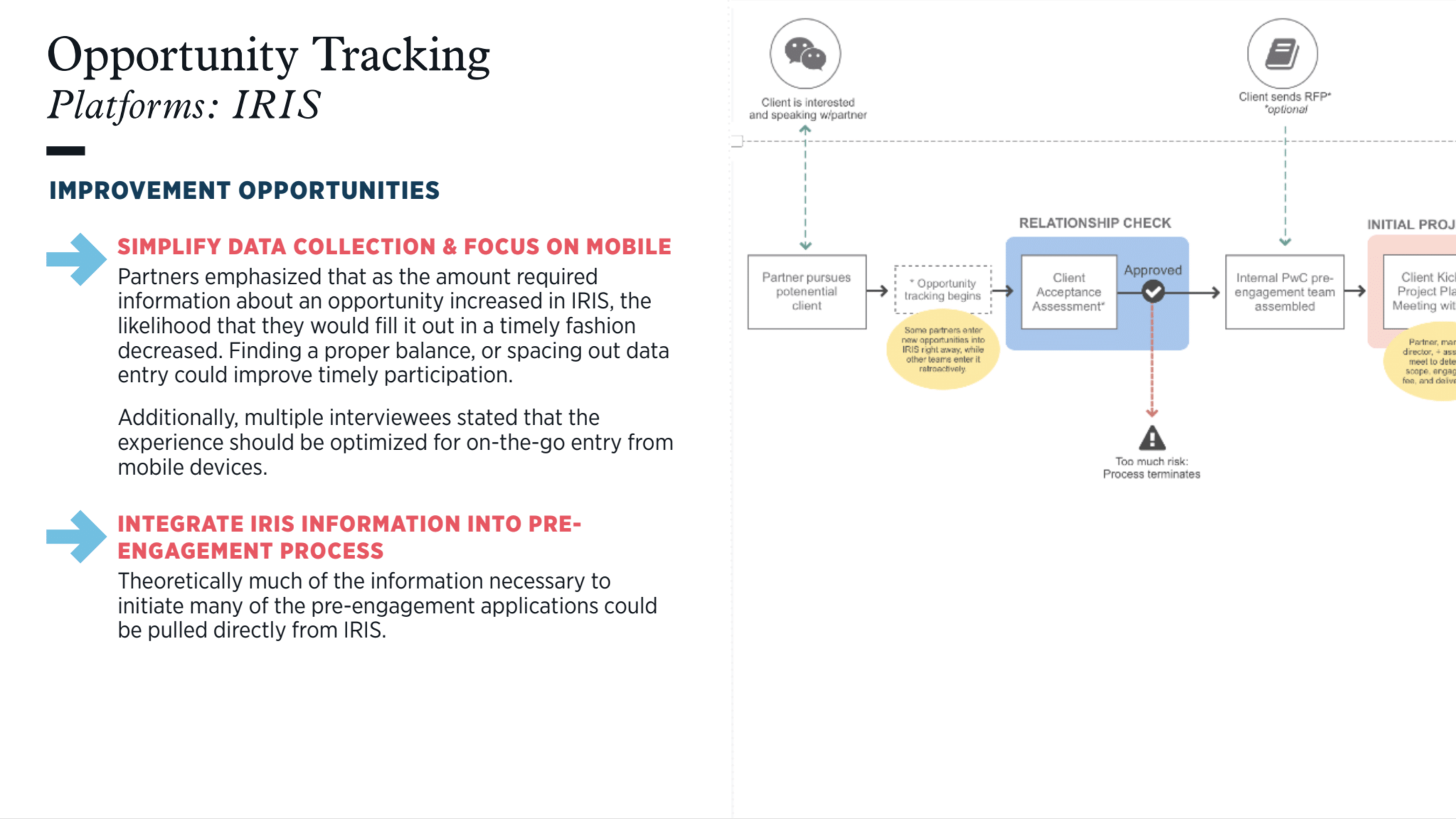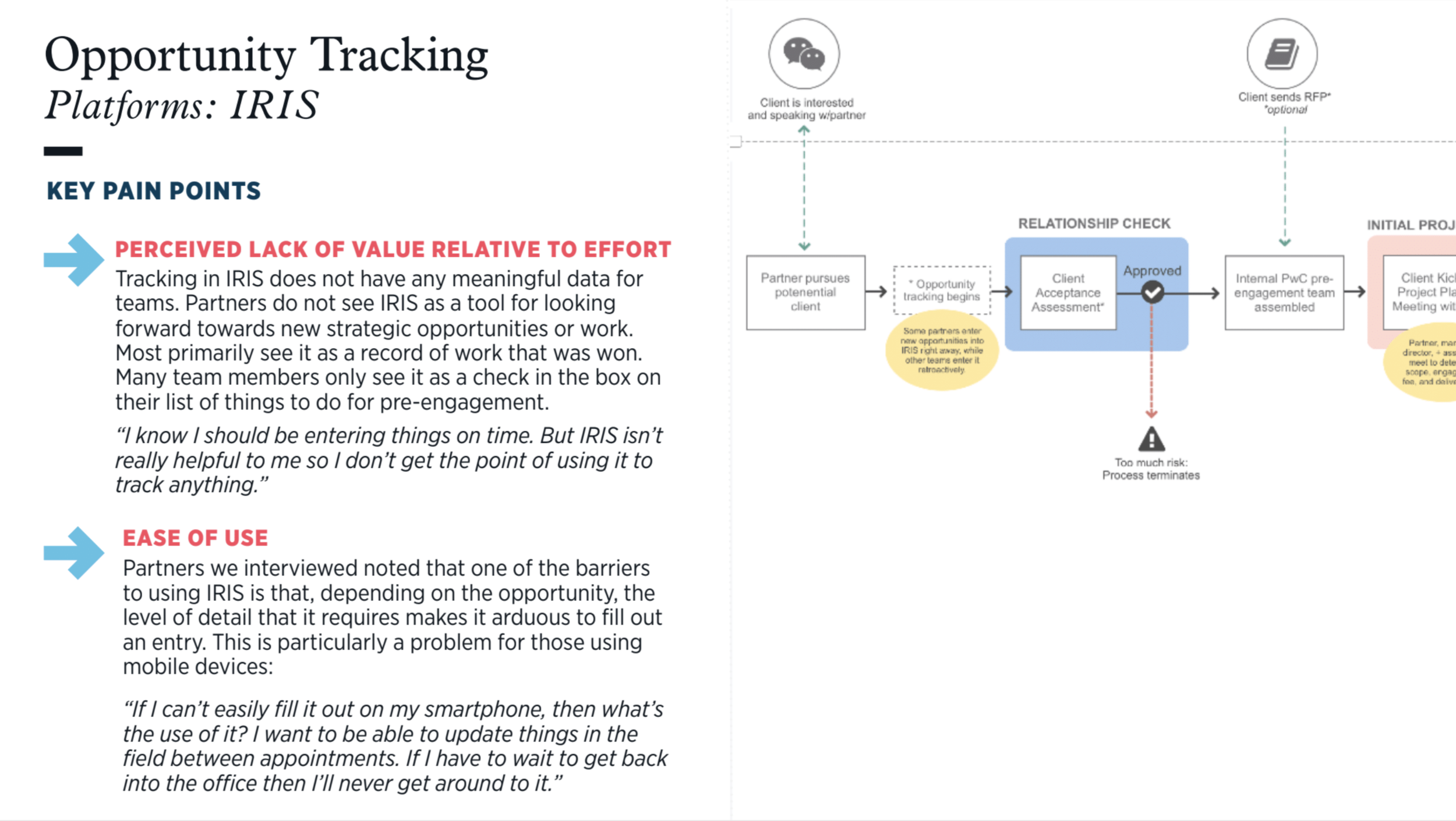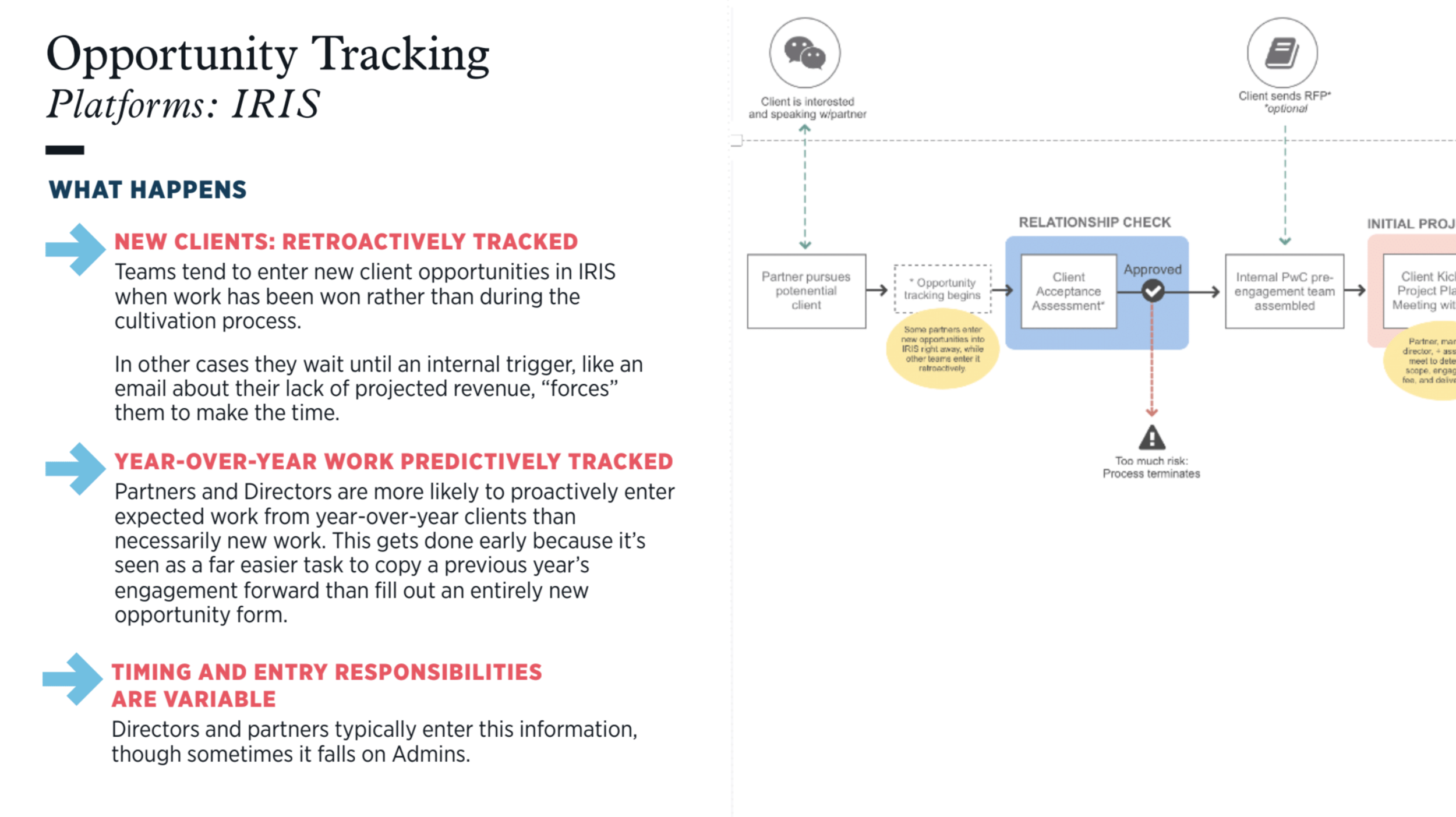Mapping out the backstage with Service Design
OVERVIEW
My client, hereby referred to as Investments & More*, needed to understand how their internal teams worked to set up client engagements, as well as identify pain points throughout the process.
*Client name has been removed due to non-disclosure.
ROLE & DURATION
I partnered with a lead designer. My role was to conduct research, analyze data, visualize the process in a map, ideate solutions, and present areas of opportunity and pain points to client.
Duration: 10 weeks
TOOLS & METHODS
- Strategy and Concept Design
- Generative and Evaluative User Interviews
- Client Management
- Tools: Sketch, Keynote
the client problem
"What are our teams during the pre-engagement process to land clients? What are the pain points?"
-Investments & more
One of the biggest challenges facing the Investments & More* was that the process their internal teams had to do in order to set up an engagement with external clients. They asked for insights into:
1. GAPS IN KNOWLEDGE OF TOOL USE
My client did not know what, how, or when apps were used throughout the process.
2. PAIN POINTS ARE NOT IDENTIFIED
It is unclear what the challenges are in the business development phase and how the apps may be contributing to these challenges.
3. OPPORTUNITIES FOR COMPREHENSIVE UX IMPROVEMENT ARE UNKNOWN
Opportunities to improve the user experience of the apps to improve the business development process need to be identified.
4. PROCESS FLOW IS NOT WELL DOCUMENTED
Currently there is no clear mapping of all the steps normally taken during client prospecting and sales.
the engagement approach
the high level research themes
Non-linear and parallel workflows
Once the initial budget is set, the team will simultaneously work across a number of Investment and More* internal applications to accomplish tasks as efficiently as possible.
confusion over status of steps
Interviewees mentioned that they don’t have a quick and easy way of understanding the status of pre-engagement steps and documents.
RIGID TOOLS LEAD TO WORK AROUNDS
Slow and inflexible tools lead most teams to work in software like Excel until the very last minute when the workflow forces them onto the platform.
business strategy informs the process teams will take, not numbers
A partner’s long term business strategy for a client is as, if not more, important as operational goals in shaping the pre-engagement process. This leads to “backing into” results across the different tools.
fluid roles depending on team
While the goal is to always have work done in the most cost effective way, depending on the make- up of a team which role does what varies greatly.
the solution overview
Map out the current process to identify what happens, key pain points, and areas of improvement.
Examples of specific findings by process step:
deliverables
comprehensive research and findings deck
To clearly communicate our research, design solutions, and future considerations to the client, I wrote and created the final deliverable to the client. This document clearly outlines our research approach and research findings, including each part of the process, clear pain points, and opportunities for improvement for internal teams.
To download the deck, click here!


